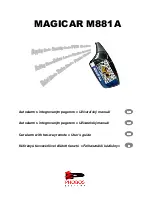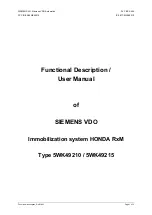
•
WARNING:
The alarm should not be operated on power derived
from a square wave, modified square wave or modified sine wave
inverter. These power sources produce high peak voltages that will
damage the alarm. These types of inverters are sometimes used to
supply power to the structure in off grid installations, such as solar
or wind derived power sources.
Wiring Instructions
CAUTION! Turn off the main power to the circuit before wiring the
alarm.
• For alarms that are used as single station, DO NOT CONNECT THE
RED WIRE TO ANYTHING. Leave the red wire insulating cap in
place to make certain that the red wire cannot contact any metal
parts or the electrical box.
• When alarms are interconnected, all interconnected units must be
powered from a single circuit.
• A maximum of 24 Kidde devices may be interconnected in a
multiple station arrangement. The interconnect system should not
exceed the NFPA interconnect limit of 12 smoke alarms and/or 18
alarms total (smoke, heat, carbon monoxide, etc.) With 18 alarms
interconnected, it is still possible to interconnect up to a total of 6
remote signaling devices and/or relay modules.
CAUTION!
Kidde alarm and accessories CAN ONLY BE interconnected
with other Kidde alarms and accessories as well as specified brands
and models of interconnect compatible alarms. Connection of Kidde
products to a non-specified manufacturer’s interconnect system, or
connection with non-specified equipment from another manufacturer
into an existing Kidde system could result in nuisance alarming, failure
to alarm, or damage to one or all of the devices in the interconnect
system. Refer to the User’s Guide supplied with each Kidde product
for interconnect compatible models, brands, and devices.
• When mixing models which have battery backup with models
without battery backup, be advised that the models without battery
backup will not respond during an AC power failure.
• The maximum wire run distance between the first and last unit in an
interconnected system is 305 m (1000').
• Image 3 illustrates interconnection wiring. Improper connection will
result in damage to the alarm, failure to operate, or a shock hazard.
• Make certain alarms are wired to a continuous (non-switched)
power line. NOTE: Use standard CSA listed household wire (as
required by local codes) available at all electrical supply stores and
most hardware stores.
Installation
8










































